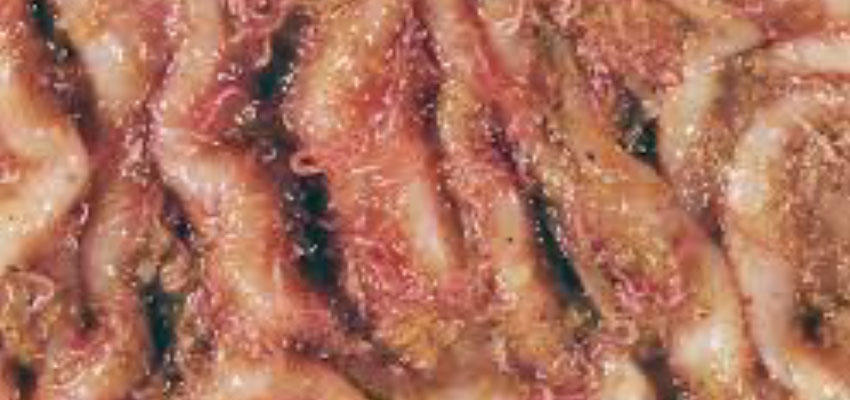

Haemonchus contortus (the Barber’s Pole worm) affects both lambs and adult sheep, feeding on blood through the stomach wall.
Unlike most parasitic worms diarrhoea is not usually seen, instead the disease commonly presents with anaemia, weakness and/or death. As the eggs do well in wet and mild temperatures, we are seeing high levels this year, so it’s important to be on the lookout for Haemonchus this summer.
Haemonchus is most commonly seen in the UK from late spring until autumn; the eggs don’t survive well over winter but in warm and wet conditions the eggs hatch rapidly and pastures become highly infective, resulting in very rapid and severe disease.

The disease usually presents in two forms, depending upon the number of larvae on the pasture. High numbers ingested cause severe anaemia, weakness and death. Low levels may result in a chronic infection; causing emaciation, moderate anaemia and fluid swelling under the chin (bottle jaw).
Haemonchosis can be easily confused with liver fluke infections, so it’s important to consult us if you are concerned. Faecal egg counts will help us to diagnose cases, as very high counts (often over 10,000 eggs per gram!) indicate Haemonchus infections. The worm is best confirmed by post mortem, your vet will inspect the abomasum (one of the stomach compartments), where infected sheep will have large numbers of visible Barber’s Pole worms. This is why affected sheep don’t get diarrhoea, as the adults live in the stomach not the intestines.
Haemonchus contortus is reported to have some resistance to our commonly used anthelmintics, so treatment must be carefully considered. Options should be discussed with us if you think your flock may be infected with Haemonchus.
Lambs suffering from simultaneous Haemonchus and other parasitic worms should be treated with yellow or clear wormers (Group 2 and 3), although there is resistance to these, so consider your farms resistance levels when choosing. To ensure the treatment has worked, a faecal egg count should be redone post-treatment (7 days for yellow, 14 days for clear) to ensure treatment has been done properly and effectively.
Adult sheep can be treated with products used to treat fluke (Nitroxynil or Closantel), as these are very effective against Haemonchus, without promoting resistance in other intestinal worms. Please consult us prior to their use as they can cause side effects in severely anaemic sheep.
Control is best achieved by an awareness of the risk factors (wet and warm temperatures), regular faecal egg counts and by speaking to us to develop a parasite management plan, as part of your flock health plan.
Remember this parasitic disease isn’t limited to your lambs. Your flock may all be at risk with the current wet summer, so be on the lookout.
Contact our farm department for a quality service to the farmers of Wiltshire, Hampshire, Dorset and Surrey.